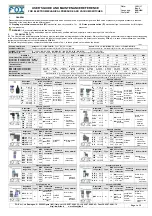
S e n d d o c u m e n t a t i o n c o m m e n t s t o m d s f e e d b a c k - d o c @ c i s c o . c o m
B-29
Cisco MDS 9000 Family Troubleshooting Guide, Release 3.x
OL-9285-05
Appendix B Troubleshooting Tools and Methodology
Using Host Diagnostic Tools
Alternatively, you can use Iometer, an I/O subsystem measurement and characterization tool, to generate
a simulated load and measure performance. Iometer is a public domain software utility for Windows,
originally written by Intel, that provides correlation functionality to assist with performance analysis.
Iometer measures the end-to-end performance of a SAN without cache hits. This can be an important
measurement because if write or read requests go to the cache on the controller (a cache hit) rather than
to the disk subsystems, performance metrics will be artificially high. You can obtain Iometer from
SourceForge.net at the following URL:
http://sourceforge.net/projects/iometer/
Iometer is not the only I/O generator you can use to simulate traffic through the SAN fabric. Other
popular I/O generators and benchmark tools used for SAN testing include Iozone and Postmark. Iozone
is a file system benchmark tool that generates and measures a variety of file operations. It has been
ported to many systems and is useful for performing a broad range of file system tests and analysis.
Postmark was designed to create a large pool of continually changing files, which simulates the
transaction rates of a large Internet mail server.
PostMark generates an initial pool of random text files in a configurable range of sizes. Creation of the
pool produces statistics on continuous small file creation performance. Once the pool is created,
PostMark generates a specified number of transactions, each of which consists of a pair of smaller
transactions:
•
Create file or Delete file
•
Read file or Append file
Benchmarking tools offer a variety of capabilities and you should select the one that provides the best
I/O characteristics of your application environment.
Utilities provided by the Sun Solaris operating system let you determine if the remote storage has been
recognized and exported to you in form of a raw device or mounted file system, and to issue some basic
queries and tests to the storage. You can measure performance and generate loads using the
iostat
utility,
the
perfmeter
GUI utility, the
dd
utility, or a third-party utility like Extreme SCSI.
Every UNIX version provides similar utilities, but this guide only provides examples for Solaris. Refer
to the documentation for your specific operating system for details.
















































